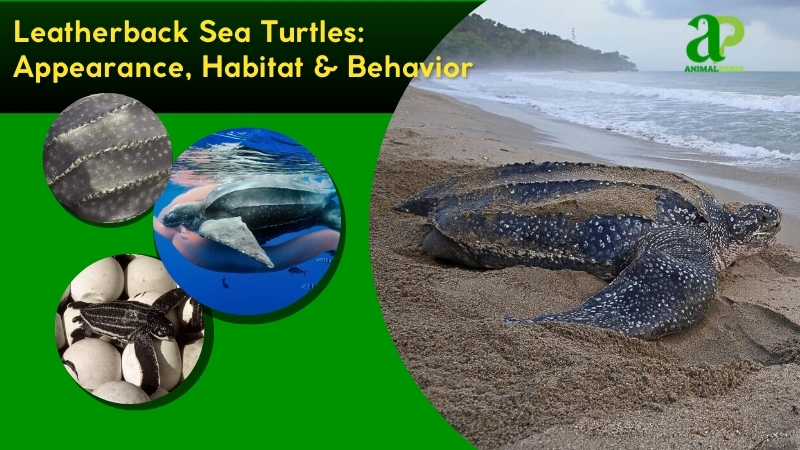Loggerhead sea turtles (Caretta caretta) stand as the only species in the Carettidae family. These robust marine reptiles display a distinctive reddish-brown, heart-shaped carapace and disproportionately large heads. Their powerful jaws evolved specifically for crushing hard-shelled prey, a trait that distinguishes them from other sea turtle species.
These marine reptiles inhabit temperate and tropical oceans worldwide. Major nesting populations concentrate on Florida’s Gulf Coast, Oman’s Masirah Island, Greece’s Zakynthos, and Australia’s Dirk Hartog Island. Adult loggerheads typically reach 2.5–3.5 feet in carapace length and weigh 150–400 pounds. Their broad cranial structure and strong flippers enable effective foraging across diverse marine environments.
Loggerheads are omnivorous, consuming jellyfish, crabs, mollusks, and seagrasses. They hunt primarily in coastal waters, using their beak-like jaws to crush prey. While not apex predators, they occupy an important ecological niche. Human encounters are infrequent, yet these turtles face significant threats from entanglement in fishing gear and shoreline development that compromises nesting habitat.
The reproductive cycle occurs between May and August on sandy beaches. Female loggerheads deposit 100–126 eggs per clutch and produce 2–4 clutches each season. After 60 days of incubation, hatchlings measuring about 1.8 inches emerge into the darkness and navigate toward the ocean. These turtles reach sexual maturity between 15–30 years and typically live 50–67 years, with some individuals surviving beyond 70.
This article explores the loggerhead’s distinctive morphology, habitat preferences spanning coastal and oceanic zones, and behavioral patterns. We highlight their contributions to marine ecosystems and the conservation challenges they face. Recent research emphasizes the urgent need to address bycatch mortality and habitat destruction to ensure the survival of this chelonian species.
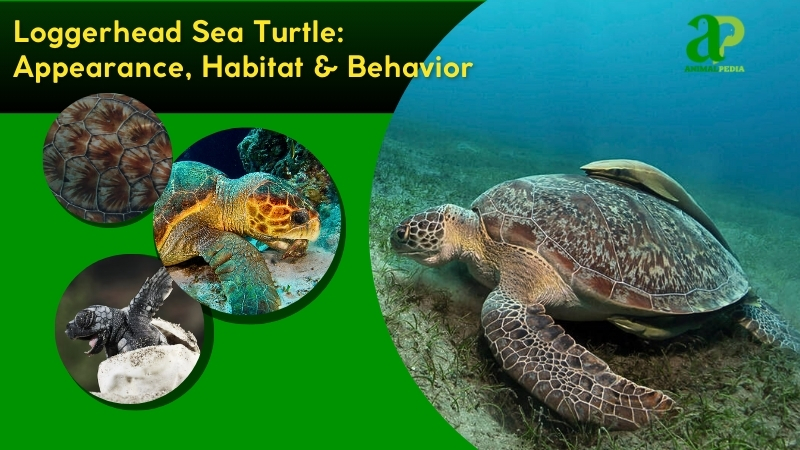
What do the Loggerhead Sea Turtles look like?
Loggerhead sea turtles (Caretta caretta) have distinctive heart-shaped bodies with reddish-brown shells. Their carapace feels hard and smooth, built from bony plates called scutes. Yellowish streaks often mark the shell surface. Their skin appears scaly with a yellowish-brown color covering their head and flippers.
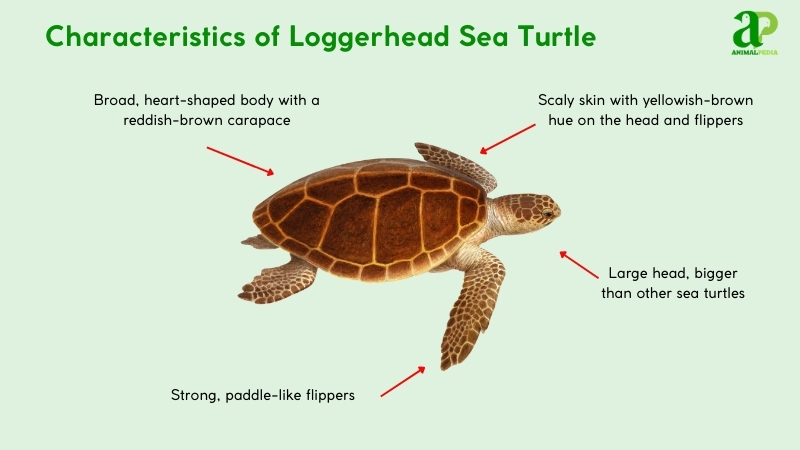
The large head sets loggerheads apart from other marine turtles. This prominent feature houses powerful jaws designed to crush hard-shelled prey such as clams and crabs. Dark, round eyes help them navigate underwater. Their bodies support strong, paddle-like flippers that span 2–3 feet, perfect for ocean migrations. The tail is small and barely visible.
Loggerheads differ from green turtles (Chelonia mydas) in their stockier build and redder shells, contrasting with the olive tones of green turtles. Their heads are larger than those of hawksbills (Eretmochelys imbricata), reflecting different feeding adaptations. Unlike leatherbacks (Dermochelys coriacea), loggerheads maintain hard scutes rather than leathery skin. Adult specimens typically measure 2.5–3.5 feet in carapace length, as confirmed by 2016 research, making them medium-sized among sea turtle species.
How big do Loggerhead Sea Turtles get?
Loggerhead sea turtles average 2.5–3.5 feet (0.8–1.1 meters) in carapace length and weigh 150–400 pounds (68–181 kilograms). These measurements reflect mature adults across their global range.
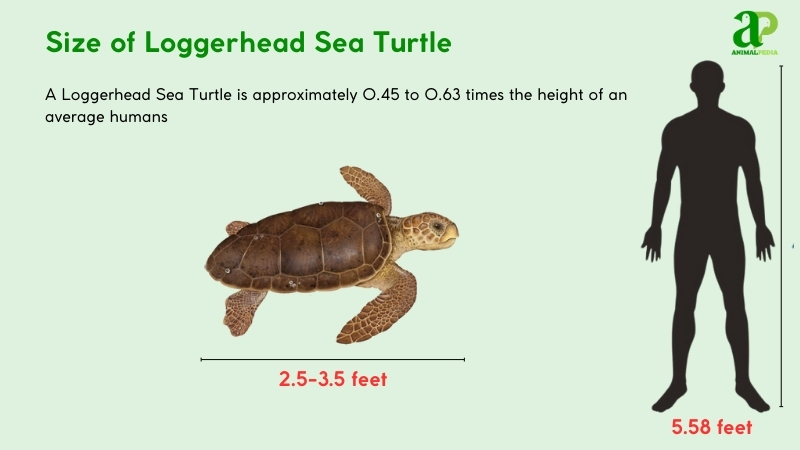
The largest recorded loggerhead, found in Spain in 2007, measured 4.1 feet (1.25 meters) and weighed 529 pounds (240 kilograms), per a 2016 study. Adults typically reach 3–4.5 feet (0.9–1.4 meters) from snout to tail.
Loggerhead sea turtles show minimal differences in size between males and females, with females slightly larger, averaging 3.3 feet (1 meter), compared to males at 3 feet (0.9 meters). Weight varies similarly, with females occasionally heavier.
| Trait | Male | Female |
| Length | 2.7 – 3.5 ft (0.82 – 1.07 m) | 2.8 – 3.7 ft (0.85 – 1.13 m) |
| Weight | 150–350 lb (68–159 kg) | 150–400 lb (68–181 kg) |
What are the unique physical characteristics of the Loggerhead Sea Turtles?
The loggerhead sea turtle has an exceptionally large head and powerful jaw muscles, distinguishing it among marine turtles as a hard-shelled prey crusher. Unlike leatherbacks, with their flexible, skin-like shells, loggerheads have a robust, bony carapace with reddish-brown scutes, providing superior protection during coastal feeding.
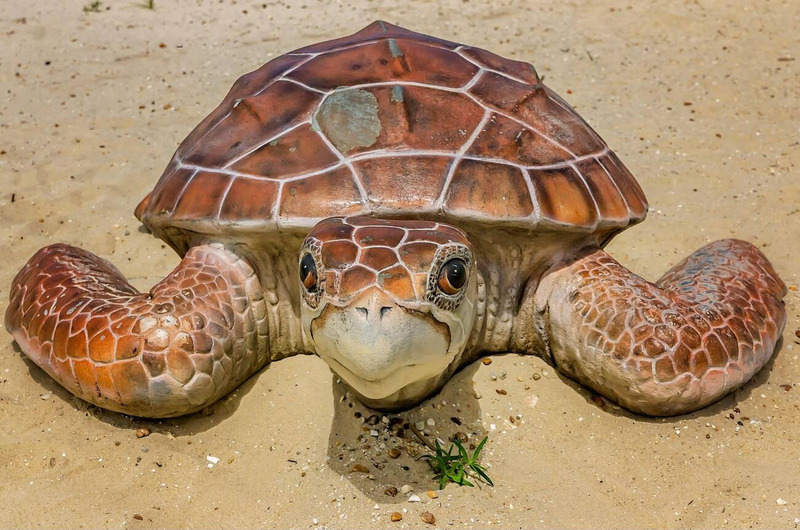
Their head, notably larger than those of green or hawksbill chelonians, contains massive mandibular structures that enable them to crush mollusks and crustaceans, as documented in a 2016 study. Their shell measures 2.5–3.5 feet (0.8–1.1 meters) and features five vertebral scutes, contrasting with the green turtle’s. This anatomical configuration, paired with strong, paddle-shaped flippers, enhances their maneuverability in shallow waters, establishing the loggeloggerhead’s ecological position among marine reptiles.
How do Loggerhead Sea Turtles adapt with their unique features?
The loggerhead’s head and powerful jaws crush hard-shelled prey like crabs, mollusks, and clams, providing energy for coastal foraging and long migrations. This adaptation ensures survival in prey-rich, shallow marine environments.
Robust jaw muscles pulverize tough prey, maximizing nutrient extraction. Acute underwater vision enables crabs to detect prey in murky coastal waters. Sensitive chemoreceptors identify crustacean chemical cues, enhancing foraging precision. Strong, paddle-like flippers enable swift swimming, aiding predator evasion and navigation. These traits, detailed in a 2016 study, enable loggerheads to exploit diverse coastal habitats effectively.
Anatomy
Loggerhead sea turtles possess specialized anatomical systems that enable them to survive across vast and varied marine environments. These physiological adaptations support both nearshore foraging and long-distance migrations, which are critical to their life cycle.
- Respiratory System: Loggerheads have large, efficient lungs that store oxygen and prevent nitrogen buildup, allowing dives lasting up to 20 minutes (Witherington & Hirama, 2016). Rapid surface recovery breathing aids extended foraging sessions.
- Circulatory System: A strong four-chambered heart ensures oxygen-rich blood delivery, supporting active swimming and maintaining core temperature across temperate and tropical seas.
- Digestive System: Adapted for omnivory, their muscular jaws crush hard-shelled prey like crabs and conchs. Their long intestinal tract extracts nutrients from both animal and plant matter, aiding dietary flexibility.
- Excretory System: Specialized lachrymal salt glands near the eyes excrete excess salt, allowing loggerheads to stay hydrated during prolonged exposure to seawater.
- Nervous System: Advanced visual and chemosensory processing helps detect prey in low-visibility waters. Loggerheads also use magnetic cues for navigation during transoceanic migrations.
Together, these systems allow loggerhead turtles to thrive in diverse habitats—from coastal bays and estuaries to deep pelagic zones—demonstrating resilience to changing marine conditions and ecological pressures.
Where do Loggerhead Sea Turtles live?
Loggerhead sea turtle habitat thrives across temperate and tropical oceans, with significant nesting populations on Florida’s Coast, Oman’s Island, Greece’s Santorini, and Australia’s Hartog Island. Foraging grounds include the Mediterranean, Caribbean, and North Atlantic Ocean.
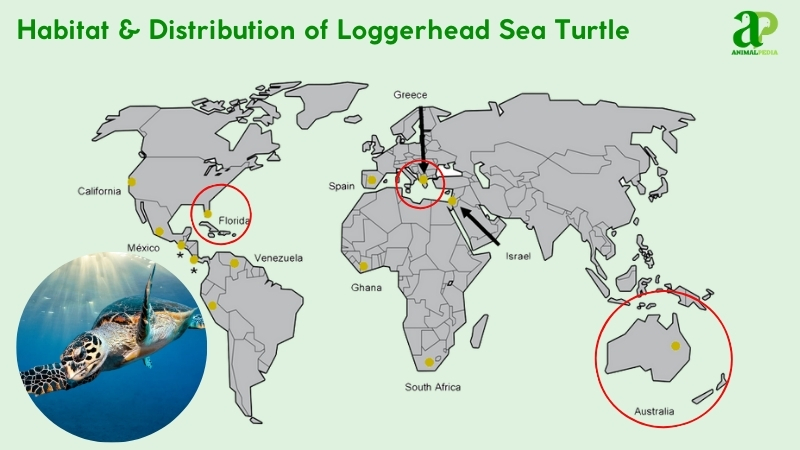
These habitats feature warm, sandy beaches for nesting and shallow coastal waters teeming with crabs, mollusks, and seagrasses, aligning with their omnivorous diet. The sheltered bays and estuaries provide abundant prey and protection from predators, making them ideal for foraging and juvenile development. Loggerheads have inhabited these regions for millions of years, with migrations covering up to 7,500 miles (12,000 kilometers) between nesting and feeding sites, driven by seasonal prey availability and reproductive cycles.
How do seasonal changes affect their behavior?
Loggerhead sea turtles exhibit distinct behaviors across two primary seasons, driven by reproduction and foraging needs, as documented in recent studies.
- Breeding Season (May–August): Females return to natal beaches to lay 100–126 eggs per clutch, typically at night to reduce predation. Males offshore, competing for mates near nesting zones. Courtship and copulation occur in coastal waters.
- Foraging Season (September–April): After nesting, adults disperse to feeding habitats, often traveling hundreds of miles. They forage in seagrass beds and benthic zones, primarily consuming crustaceans, mollusks, and jellyfish. Dives can reach depths of 200 feet (60 meters) and last 15–30 minutes.
These seasonal patterns, documented by Witherington & Hirama (2016), reflect evolved strategies that balance energy expenditure with survival and reproductive efficiency across dynamic marine environments.
What is the behavior of Loggerhead Sea Turtles?
Loggerhead sea turtles demonstrate specialized behavioral patterns that support survival in dynamic coastal and oceanic ecosystems. Their solitary nature, wide-ranging migrations, and robust foraging strategies highlight evolutionary adaptations for life in the marine environment.
- Feeding Habits: Loggerheads crush crabs and mollusks with powerful jaws. They forage in seagrass beds and reefs.
- Bite & Venomous: Non-venomous; their strong bite targets hard-shelled prey. They pose no threat to humans.
- Daily Routines and Movements: Active during the day, they dive for prey and rest in shelters. Migrations span thousands of miles.
- Locomotion: Paddle-like flippers enable agile swimming and dives to 200 feet (60 meters). They maneuver adeptly in currents.
- Social Structures: Solitary except during mating, they lack complex social bonds. Nesting females briefly congregate.
- Communication: Limited to physical cues during mating. No vocalizations occur in open water.
These behaviors collectively underscore the loggerhead’s social role as a mobile, solitary predator in coastal ecosystems, optimizing energy use and habitat exploitation throughout its life cycle.
What do Loggerhead Sea Turtles eat?
Loggerhead sea turtles are omnivorous, favoring crabs, mollusks, and seagrasses. Their preferred foods include conchs and whelks, which they crush with powerful jaws. Non-aggressive; they do not attack humans and focus on benthic prey. Loggerheads crush prey with their beaks, swallowing bite-sized pieces. Large prey can cause choking or digestive blockages, though this is rare due to the jaw’s strength.
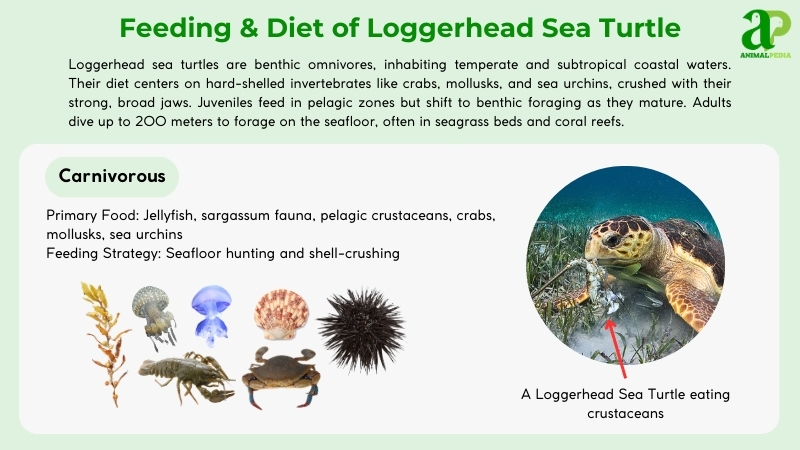
- Diet by Age:
Hatchlings and juveniles feed on small invertebrates like amphipods and shrimp. As they grow, their diet shifts to include harder prey such as crabs, conchs, and bivalves. Adults primarily consume benthic organisms, using powerful jaws to crush armored prey like horseshoe crabs and whelks.
- Diet by Gender:
No major dietary differences are observed between males and females. Both forage in neritic zones, targeting similar prey. Their diet reflects habitat use and resource availability more than sex, with both exhibiting generalist carnivorous feeding patterns.
- Diet by Seasons:
During the foraging season (September–April), loggerheads feed intensively in coastal benthic habitats. During the nesting season (May–August), feeding declines—particularly in females—due to energy allocated to egg production and nesting migrations.
How do Loggerhead Sea Turtles hunt their prey?
Loggerhead Sea Turtles hunt with efficiency across their marine habitat. These carnivorous reptiles use their powerful jaws and robust beaks to capture benthic invertebrates, including crabs, sea urchins, and jellyfish.
During predation, Loggerheads depend on acute vision to detect prey movement beneath the water. They propel themselves using their muscular front flippers, generating quick bursts of speed toward their target. The turtle strikes with precision, capturing prey in a single decisive movement.
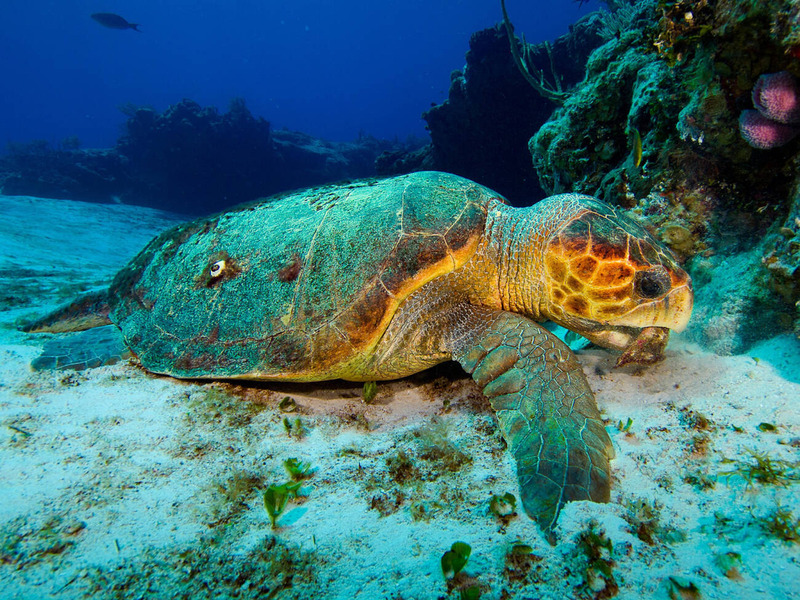
This hunting strategy reveals their evolutionary adaptations and foraging efficiency, essential traits for their survival in pelagic environments. Their technique demonstrates specialized feeding behavior developed over millions of years.
Loggerheads employ tactile hunting in murky waters and visual hunting in clear waters, demonstrating behavioral plasticity. Their crushing mandibles easily break through the hard shells of crustaceans and mollusks, their primary food source in shallow coastal zones.
Are Loggerhead Sea Turtles venomous?
Loggerhead Sea Turtles are not venomous. Despite their intimidating appearance, with strong jaws and sharp beaks, these marine reptiles lack venom glands.
These oceanic chelonians rely on their massive size, physical strength, and exceptional hunting skills to capture prey. Their diet consists primarily of hard-shelled invertebrates such as crabs, jellyfish, and conchs.
Loggerheads display methodical hunting behavior. They patiently wait for the right moment to strike, using their powerful jaw muscles to crush the tough exoskeletons of their prey items. This adaptation allows them to access food sources unavailable to other marine species.
With acute visual perception and a refined sense of smell, Loggerhead Sea Turtles (Caretta caretta) efficiently locate food throughout their extensive oceanic range. These sensory adaptations help them thrive as they navigate the complex marine ecosystems they inhabit.
When are Loggerhead Sea Turtles most active during the day?
Loggerhead Sea Turtles are most active at dawn and dusk. These crepuscular periods offer lower light levels, helping their navigation while reducing predator exposure. At daybreak, these marine reptiles (Caretta caretta) rise from deeper waters to begin foraging. They hunt for benthic prey, including crustaceans, mollusks, and cnidarians.
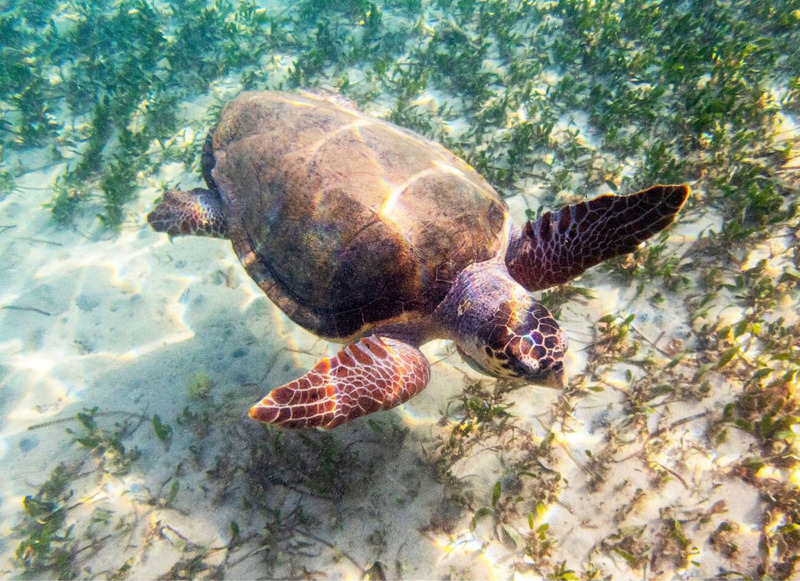
During sunset, Loggerheads continue feeding. They maximize the twilight period when water visibility is sufficient to locate prey. Throughout the day, these chelonians often rest on the seafloor or slowly patrol their feeding grounds. Their diurnal activity pattern centers on the morning and evening periods when they display peak movement and feeding behavior.
The crepuscular rhythm of Loggerhead turtles represents an evolutionary adaptation balancing predator avoidance with foraging efficiency. This behavior pattern is consistent across their Mediterranean, Atlantic, and Pacific habitats. “The beauty of Loggerhead Sea Turtles is best experienced during the tranquil hours of dawn and dusk, a reminder of nature’s adaptive adaptability and resilience.”
How do Loggerhead Sea Turtles move on land and water?
Loggerhead Sea Turtles move differently in water and on land. In the ocean, they use their powerful front flippers to swim long distances efficiently. These marine reptiles can navigate currents with minimal effort, propelling themselves through the water with powerful, winglike strokes.
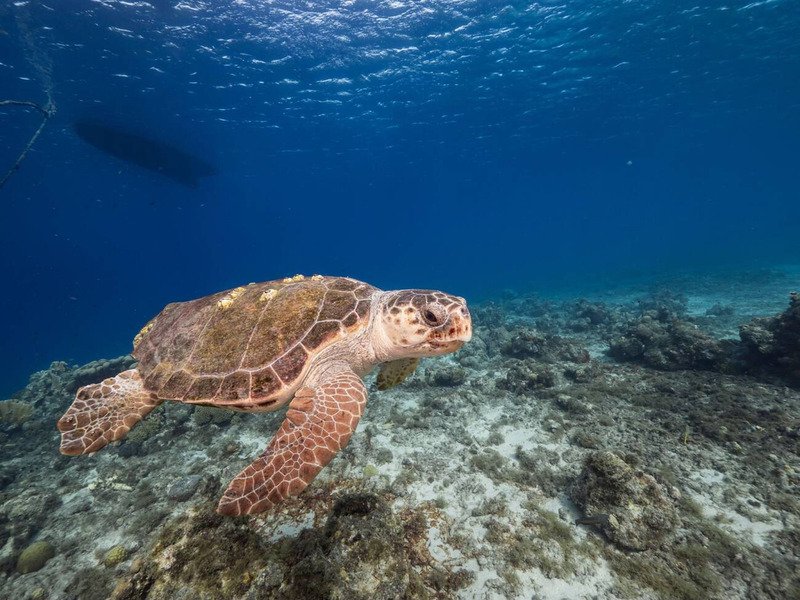
On land, Loggerheads move more laboriously. Female turtles drag themselves across beaches using alternating movements of their flippers. This terrestrial locomotion appears awkward but serves its purpose during the critical nesting process. They use their rear flippers to dig egg chambers and their front limbs to throw sand when covering nests.
The contrast between their aquatic grace and beach mobility highlights their evolutionary adaptation. These Caretta caretta possess hydrodynamic shells and paddle-shaped limbs perfectly suited for ocean travel, while still retaining enough mobility for their brief but essential time ashore during reproduction cycles.
Do Loggerhead Sea Turtles live alone or in groups?
Loggerhead Sea Turtles are typically solitary creatures, preferring to live independently. These magnificent sea turtles usually lead solitary lives, traversing vast ocean areas on their own. They aren’t only seen in groups or interacting frequently with other turtles, except during the breeding season for mating.

Loggerheads are known for their independent nature, roaming the waters without companions. These turtles navigate the ocean depths with resilience and determination, relying on their own senses to locate food and shelter.
Opting for a solitary existence, Loggerhead Sea Turtles embody freedom in the expansive oceans they inhabit. Their distinct behavior sets them apart as individuals, each forging their own path through the boundless blue expanse.
The loggerhead sea turtle is a fascinating species known for its powerful jaws and long migrations across the globe. Loggerheads, like other turtles, belong to the Testudines, a diverse group that includes both sea and land turtles. To learn more about the wide range of species and their unique characteristics, exploring the Testudines will give you a deeper understanding of this ancient order.
How do Loggerhead Sea Turtles communicate with each other?
Loggerhead Sea Turtles (Caretta caretta) primarily use nonverbal communication rather than extensive vocal exchanges. These marine reptiles communicate through body posturing, physical contact, and limited sound production.
During social interactions, Loggerheads may engage in tactile communication by bumping or touching one another to establish dominance hierarchies or during mating rituals. Visual cues, such as head movements and flipper positioning, signal intent to other turtles.
While not as vocal as other chelonians, Loggerheads do produce limited acoustic signals. Researchers have documented low-frequency grunts and occasional hisses, particularly during nesting or when stressed. These vocalizations rarely occur underwater.
Chemical signaling may also play a role in Loggerhead communication, especially during reproductive periods. Males likely detect pheromones released by receptive females, though this sensory mechanism is understudied in sea turtle populations.
Unlike social species, Loggerheads spend most of their lives in solitary existence, limiting their need for complex communication systems. Their primary social interactions occur during brief mating encounters and when females gather at nesting beaches.
How do Loggerhead Sea Turtles reproduce?
Loggerhead sea turtles reproduce by laying eggs on coastal beaches. The breeding season runs from May to August, with females returning to their birthplace shores. Males court females offshore through flipper strokes and nuzzling. Mating happens in shallow waters and lasts only briefly.
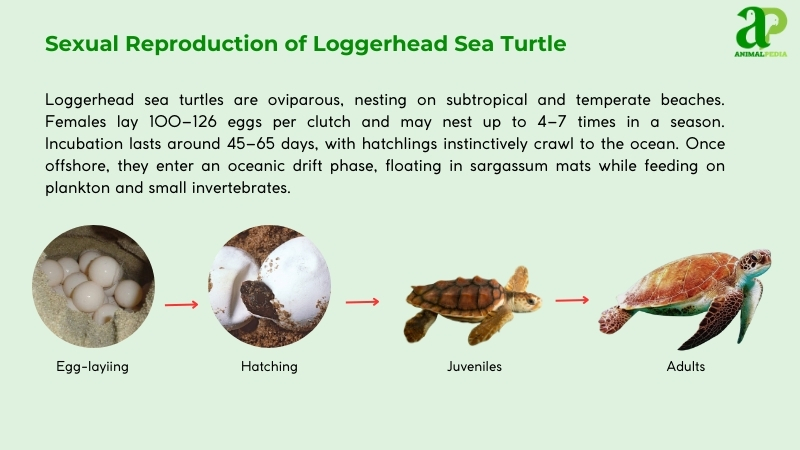
Females dig sandy nests at night, depositing 100–126 eggs per clutch. Each egg weighs about 1.5 ounces (43 grams). A single female produces 2–4 clutches every 12–15 days, carefully covering each nest with sand for protection. Males return to feeding grounds while females may nest again. Coastal development and erosion threaten nesting success, reducing it by 20% in Florida, according to 2017 research.
The eggs incubate for 55–65 days. Hatchlings emerge at night and follow the moonlight to reach the ocean. These tiny turtles, measuring just 1.8 inches (4.5 centimeters), face heavy predation. Juveniles develop in open ocean zones before reaching sexual maturity in 15–30 years. Their lifespan averages 50–67 years, and females can produce up to 2,000 eggs during their lifetimes.
Atlantic populations are stable, while Mediterranean groups continue to decline, as documented by Witherington & Hirama (2016). Conservation efforts focus on protecting nesting habitats to increase hatchling survival rates.
How long do Loggerhead Sea Turtles live?
Loggerhead sea turtles (Caretta caretta) have longevity. They reach sexual maturity between 25 and 35 years of age. Once mature, they typically live 50 to over 70 years in natural marine environments. Some specimens may exceed this lifespan in protected habitats or conservation areas.
Research on demographic differences is limited, but current data indicate that both males and females enjoy similar life expectancies. Females are more frequently observed in research datasets because of their observable nesting behavior on beaches. Their extended life cycle supports multiple reproductive seasons, which helps maintain population resilience when habitat conditions are favorable (Avens et al., 2020).
What are the threats or predators that Loggerhead Sea Turtles face today?
Loggerhead sea turtles face multiple threats, primarily from human activities and from natural predators that threaten eggs and hatchlings. These pressures challenge their populations, especially in the Atlantic and Mediterranean.
- Bycatch: Fishing nets trap thousands each year, causing drownings; 20% of Northwest Atlantic loggerheads are affected each year (Witherington & Hirama, 2016).
- Habitat Loss: Coastal development destroys nesting beaches, reducing hatchling success by 30% in Florida.
- Pollution: Ingested plastic blocks digestion; 35% of autopsied loggerheads showed plastic debris, leading to malnutrition.
- Climate Change: Warmer temperatures skew sex ratios to female-heavy, and rising seas flood 25% of nests.
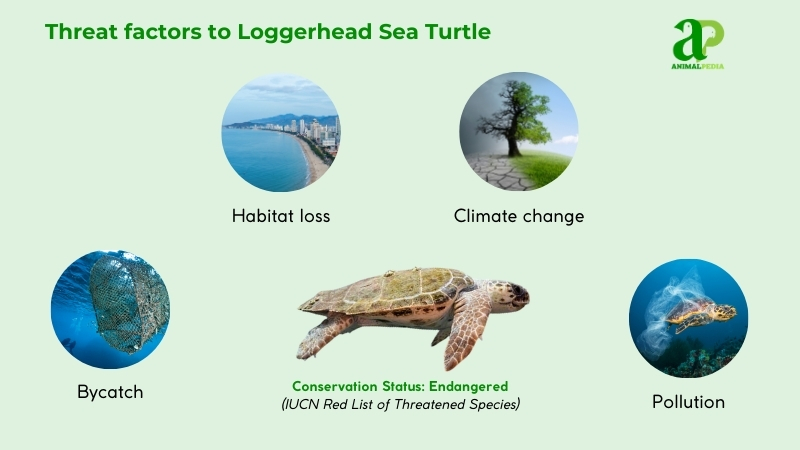
Predators include crabs, birds, and fish targeting eggs and hatchlings on beaches or nearshore. Adults face rare shark attacks due to their size.
Human impacts are significant, with a 40% population decline in the Mediterranean since the 1980s (Ceriani & Meylan, 2017). Bycatch, coastal construction, and pollution drive losses, while poaching persists in some regions. Conservation efforts, such as nest protection and turtle excluder devices, aim to mitigate these threats but face challenges.
Are Loggerhead Sea Turtles endangered?
Yes, Loggerhead sea turtles (Caretta caretta) are threatened. The International Union for Conservation of Nature classifies them as “Vulnerable” globally. Their Northwest Atlantic subpopulation faces “Enda”gered” sta” us due to human-driven threats.
Population numbers vary regionally. Scientists count 40,000–50,000 nesting females worldwide. The Northwest Atlantic holds most (30,000–40,000), mainly in Florida. The Mediterranean population shows alarming decline—only 2,000–3,000 nesting females, a 30% drop since the 1980s. Pacific populations are at crisis levels, with fewer than 1,000 nesting females annually in Japan and Australia.
Major threats include bycatch in fishing, beach development, and plastic pollution. These dangers have reduced global turtle numbers by 20–40% over the past 30 years. Conservation measures such as turtle excluder devices and protected nesting habitats have stabilized some Atlantic populations, but Mediterranean and Pacific loggerheads continue to struggle for survival.
What conservation efforts are underway?
Global conservation programs protect loggerhead sea turtles from bycatch, habitat destruction, and pollution. Since the 1980s, Loggerhead Marinelife Center and Sea Turtle Conservancy have safeguarded 80-100% of nests in critical habitats like Florida’s Florida Bay, significantly improving hatchling survival rates.
The Kiawah Island Turtle Patrol, operating since 1973, marks nesting sites and educates visitors, resulting in a 20% increase in nests since 2000. In Greece, ARCHELON has achieved a 144% growth in Mediterranean nest counts through systematic beach patrols and strategic nest relocation since 1984.
Legal protections include the U.S. Endangered Species Act (1978), which classifies loggerheads as threatened and requires turtle-excluder devices (TEDs) in fishing gear, cutting accidental captures by 50%. The CITES Appendix I designation prohibits international trade of these marine reptiles and their products.
Rehabilitation efforts show promise. Loggerhead Marinelife Center returns 300-400 turtles to the ocean annually, with 90% survival. SeaWorld’s breeding initiative (2003-2009) successfully hatched 103 eggs and released healthy juveniles, helping stabilize populations in Florida, which hosts 90% of U.S. nesting activity.
Success metrics are evident in Cabo Verde, where nest counts surged from 3,133 (2007) to 41,965 (2020), according to Eizaguirre’s arch. While Florida maintains robust nesting density, recovery is uneven globally, with Mediterranean populations still declining according to Ceriani & MeylaMeylan’s assessment.
Frequently Asked Questions
Do Loggerhead Sea Turtles Have a Strong Sense of Smell?
Yes, loggerhead sea turtles have a strong sense of smell. They rely on this sense to find food and navigate the vast ocean waters. Their ability to detect scents is important for their survival.
How Long Can Loggerhead Sea Turtles Hold Their Breath Underwater?
You can hold your breath underwater for an impressive 4 to 7 minutes, but loggerhead sea turtles have you beat! These incredible creatures can stay submerged for up to 4 to 7 hours.
Are There Any Specific Markings That Help Identify Loggerhead Sea Turtles?
Look for distinct reddish-brown shells with light yellow markings on the Loggerhead Sea Turtle. These unique markings help identify them amongst other sea turtle species. Keep an eye out for these characteristics!
Do Loggerhead Sea Turtles Migrate to Different Locations?
Yes, loggerhead sea turtles migrate to different locations. They travel long distances for nesting and feeding purposes. These migrations are important for the species’ survival and play a significant role in maintaining its population.
How Long Do Loggerhead Sea Turtles Typically Live in the Wild?
In the wild, loggerhead sea turtles typically live for about 50 to 67 years. Protect their environment, and they can thrive even longer. Guarantee oceans stay clean and safe for these magnificent creatures.
Conclusion
You’ve explored the world of Loggerhead Sea Turtles (Caretta caretta) – from their distinctive appearance to their complex behaviors. These marine reptiles navigate vast oceans and return to their natal beaches with precision. Their evolutionary adaptations enable them to survive in diverse marine ecosystems across temperate and tropical waters.
Conservation efforts are crucial as these turtles face multiple threats. Their population status as vulnerable on the IUCN Red List highlights the ongoing need for protection. Remember that each nesting female represents decades of survival against challenging odds.
Let’s protect these ancient mariners. Through understanding comes appreciation, and through appreciation comes action. These ocean ambassadors have navigated Earth’s oceans for over 110 million years – their continued existence depends on our stewardship of marine habitats.







